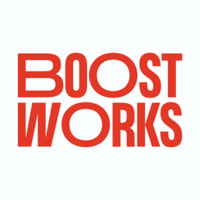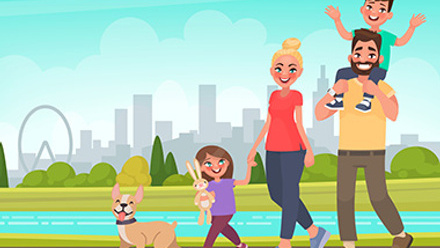Your benefits package is generous- now make it visible
Around four out of ten (40%) employee benefits are used on average, and only 51% of employees feel communication with HR is open, according to Boostworks’ research report Beyond the Salary Slip (2024). That’s a significant gap and a missed opportunity that organisations must look to bridge.
Here’s some tips to help HR leaders and internal comms teams communicate employee benefits and rewards more effectively.
1. Start with clarity and consistency
Benefits communication should be clear, jargon-free, and consistent across all communication channels that are meaningful for your business and employees.
Whether you’re launching a new wellbeing benefit or have a long-standing discounts scheme, make sure your messaging is easy to understand and accessible to all employees including offline or deskless workers.
We recommend using plain language, avoiding acronyms, and repeating key messages regularly. Repetition is essential to ensure that employees are consistently reminded about the benefits on offer.
Benefits and rewards provide valuable support and opportunities for employees to feel boosted year-round, so the cadence of your internal communications should match that.
2. Make it personal
In any communications strategy, personalisation is essential to ensure that messages land with meaning and impact.
Where you can, tailor your internal communications to different employee groups, whether that’s by location, role, life stage, or interests.
Not all businesses have the infrastructure to deliver different messages to different groups, so if that’s the case for your business, consider crafting messages for different audiences within your communications.
For example, in a monthly benefits newsletter, you could split your content into sections that focus on different characteristics such as people with young families, people buying their first homes, people looking to try new activities and more. That way, individuals can easily resonate with perks that suit their needs.
3. Use the right channels
Many businesses turn to email as their primary communications channel, but what are the channels your employees actually engage with? How do they prefer to receive information from your business?
Consider using a mix of channels that work for your employees, such as:
- Intranet banners and updates posted to a central space for all employees to access
- Line manager briefings delivered virtually on in-person to individual teams
- Digital signage in communal areas for quick prompts and instant info
- Printed materials distributed to physical spaces for offline teams
- Monthly webinars available on-demand covering specific benefits
- Push notifications for instant, on-the-go updates from your benefits app
- Push notifications rely on your benefits being accessible from a mobile app, which will depend on the provider you choose.
4. Empower line managers
Managers are the unsung heroes of benefits communication. They’re often the first point of contact for employees and can play a vital role in reinforcing messages, answering questions, and encouraging benefits uptake.
It’s therefore important that managers are equipped with the right resources and support, so they can consistently talk about your benefits offering to their team, answer questions and provide valuable support to remove barriers to access.
Building up a toolkit of resources, support documents, ‘How to’ guides, FAQs and talking points will make it easier for your managers to champion your benefits confidently and consistently.
5. Celebrate success stories
Nothing brings a benefits programme to life like real stories from employees that have been positively impacted by the perks available to them.
They can provide real examples of how they’ve boosted their wellbeing, saved money or achieved a personal goal. These stories build trust and help other employees envisage how they could also feel the benefit of their benefits!
6. Treat your benefits like a product
Your benefits programme is something you need to market to your employees in order for your investment to be worthwhile. It needs to meet employee needs, support their challenges and make a difference to their lives.
When it comes to communicating about your benefits, this means you can adopt a specific visual style, even give your benefits programme its own brand and set out a communications plan that leans on relevant messages throughout the year to encourage consistent usage.
7. Measure and adapt
As with any communications strategy, tracking performance is critical to ensure your efforts are making a meaningful difference. Beyond capturing data points related to your specific communications, be sure to get genuine feedback from your workforce too.
An email being opened and clicked can only give a part of the picture. Did employees find your communications useful? Did it encourage them to use their benefits?
Couple your comms insights with your benefits usage metrics to understand how successful you’ve been and how you can refine your approach.
Final thoughts
The impact of employee benefits and rewards entirely depends on how much they’re utilised, which heavily relies on how they’re communicated to employees. But it’s worth noting you’re your communication strategy isn’t the only place to look if your benefits usage isn’t where you want it to be.
Supplied by REBA Associate Member, Boostworks
We’re the people that help people thrive.








